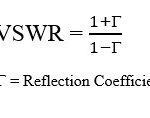What is DL CA in LTE?
In this article, we are going to explore DL CA, a key component of LTE networks. If you’ve been following our discussions about LTE, you might have come across the term “Carrier Aggregation” or “CA.” To simplify, Carrier Aggregation is a technique that allows the LTE network to combine multiple frequency bands, enhancing data throughput and improving network performance. But today, we will specifically focus on DL CA, which refers to Downlink Carrier Aggregation.
DL CA stands for Downlink Carrier Aggregation in LTE. It is a method used to increase the capacity and speed of data transmission from the network to the user equipment (UE). Essentially, DL CA allows an LTE base station (eNodeB) to combine multiple component carriers (CCs) in different frequency bands to provide a higher data rate to the user. This is particularly important as user demand for high-speed data services, such as streaming and gaming, continues to rise.
To understand DL CA, let’s break it down into its components. In LTE, a single carrier can deliver data at a certain rate, but by aggregating multiple carriers together, the data rate increases. The aggregated carriers are referred to as component carriers, and each component carrier operates at a different frequency. DL CA combines these component carriers to maximize the available bandwidth and deliver faster data speeds to the user.
For instance, if a user is connected to an LTE network, the network can use multiple carriers (e.g., 20 MHz of bandwidth on Band 3, 20 MHz of bandwidth on Band 7) and combine them to provide higher data throughput. The more component carriers combined, the higher the downlink throughput. This is especially useful when users are in high-demand areas, such as stadiums or busy urban centers, where network congestion can reduce speed.
Let’s delve a bit deeper into how DL CA works. The eNodeB (base station) is responsible for managing the different component carriers. It can use up to five component carriers, depending on the network’s configuration. Each component carrier can be in a different frequency band, and the LTE UE (user equipment) is capable of supporting multiple component carriers simultaneously, allowing for faster download speeds.
Here’s how DL CA improves network performance:
- Increased Bandwidth: By aggregating different frequency bands, DL CA significantly increases the bandwidth available for data transmission, allowing for higher speeds and better user experience.
- Improved Data Throughput: The combination of multiple carriers leads to greater data throughput, meaning users can download large files faster, stream high-definition videos with fewer interruptions, and have an overall improved network experience.
- Network Efficiency: DL CA helps optimize the use of available spectrum, making it possible to efficiently handle high data traffic, especially in dense urban areas.
- Better Coverage: In certain cases, DL CA can also improve coverage by using frequency bands that are less congested, thus providing more stable connections in areas where signal strength is a concern.
It’s important to note that DL CA requires specific hardware and software support on both the network side (eNodeB) and the user equipment (UE). The LTE UE must support Carrier Aggregation and be capable of receiving multiple component carriers simultaneously. This is why newer smartphones and devices, which are equipped with advanced LTE capabilities, benefit the most from DL CA technology.
As we’ve discussed in previous articles, LTE networks are designed to meet the growing demand for high-speed mobile data. With the advent of technologies like DL CA, the capacity of LTE networks has been significantly enhanced, ensuring a seamless user experience even in high-traffic areas. This innovation in LTE technology brings us closer to delivering faster and more reliable mobile internet connections, especially in environments where data demand is high.


